In celebration of Women’s History Month, Cooper Hewitt is dedicating select Object of the Day entries to the work of women designers in our collection.
Helen Dryden (1883–1972) was an American artist, fashion and costume illustrator and designer, illustrator, and designer in the early 20th century through the 1940s. The Cooper Hewitt National Design Library collects resources on decorative arts and design. We have a wealth of materials that includes World’s fairs publications, periodicals, and original source materials relating to Art Deco and 20th century design. While researching our collection in this era, the name Helen Dryden started popping up. I got curious, and discovered in the pages of our serials and other materials her amazing and varied career. In her early career, she was known as a fashion illustrator, most notably designing covers and illustrations for Vogue Magazine from 1909–22, and then designed the covers for the fashion and dressmaking magazine The Delineator, published by Butterick’s.
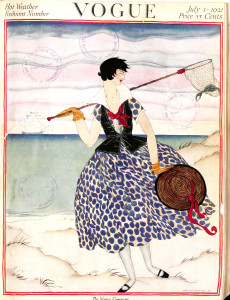
Vogue, (Cover) July 1, 1921 Vol. 58, no. 1, TT500 .V7X Smithsonian Libraries
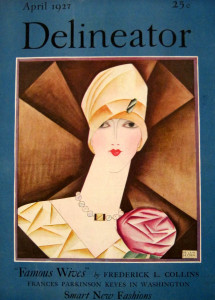
The Delineator, (Cover) Vol 100, no.4. April, 1927, f TT500 .D35 Smithsonian Libraries.
Helen Dryden’s wide-ranging talents and interests seem to touch down everywhere — in art schools, theaters, exhibitions and competitions. She designed wallpaper, textiles, decorative art panels and murals before beginning a new career as an industrial designer. Her work was greatly inspired by 18th-century French society, design and dress and she visited Paris before the outbreak of WWI, and again to visit the 1925 Paris International Exposition of Modern Industrial and Decorative Arts. In 1916 Dryden was called the “Witch of Color”[1] in a review of Watch Your Step, a musical starring Irene and Vernon Castle. The costumes she designed were “spellbinding” and “bewitched” the audience. She also designed costumes for a Broadway production Claire de Lune starring Ethel and Lionel Barrymore.
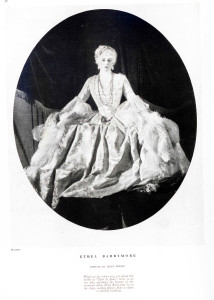
Vogue, Ethel Barrymore as Queen Anne in Claire de Lune.
Vol. 57, no.12 TT500 .V7X Smithsonian Libraries
When the Grand Central School of Art in New York City opened in October of 1924, she was one of its first instructors, listed as a costume designer. In 1927, New York City department store R.H. Macy’s held the “Exposition of Art in Trade” to demonstrate the influence of merchants on the designs of the manufactured goods they sold, the connection between art and commerce, and the ability of consumers to fill their homes with everyday beauty. A Helen Dryden silk patterned textile design appeared in the show. Titled “Accessories,” the pattern incorporated aspects of modern life that included high hats, high heels, taxicabs and cocktail shakers. She designed textiles for the Americana Collection of Stehli silks.
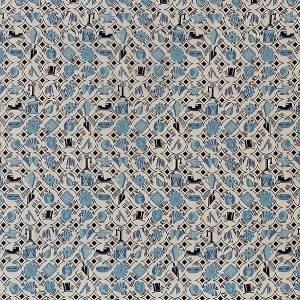
“Accessories”, 1925. Metropolitan Museum of Art.
Hers is not a household name today. I had never heard of her, there are no monographs or major articles written about her. She’s rarely if ever mentioned in the literature of the history of design. She was famous and a household name in her day, and one of the highest paid designers in America at one time. Like so many designers, she has faded into obscurity and anonymity in the fast paced modern world.
Elizabeth Broman is a Reference Librarian at the Cooper Hewitt, Smithsonian Design Library.
[1] “Witch of Color,” Bruno’s Weekly, Volume 3, Number 8, 5 August 1916
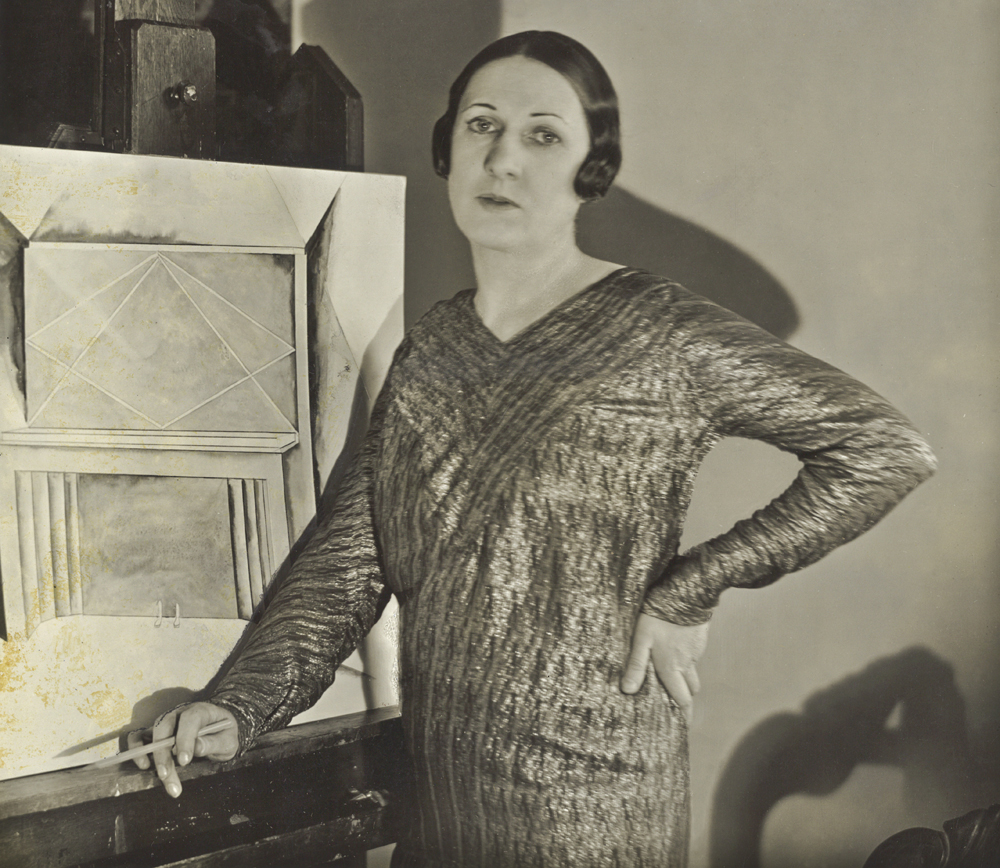
8 thoughts on “Helen Who?? Her Life as a Fashion Illustrator, Costume Designer, and… (Part One)”
Debra Joswick on March 19, 2016 at 2:24 pm
I’m so glad CH finds these people for us. I love this artist’s work.
Elizabeth Broman on March 21, 2016 at 9:48 am
Dear Debra: Stay tuned for Helen Who? Part Two, – her life as an industrial designer!! She’s a bot if a mystery lady and I’m going to keep researching
Elizabeth Broman on March 21, 2016 at 9:50 am
Stay tuned for Helen Who? Part 2, her life as an industrial designer. She’s a bit of a mystery woman and I’m going to keep digging- a remarkable life and career!
Sarah Marie Horne on April 12, 2016 at 12:19 pm
My dissertation focuses on the career of Helen Dryden. I’m glad to find many people are beginning to rediscover her work. Last Friday I presented on her designs for Studebaker at the Annual Parson’s/Cooper Hewitt Graduate Student Symposium on the history on design. You can view it here, in the second session:
http://livestream.com/TheNewSchool/Voorsanger-Symposium-Showing-Off?t=1460337248737
Mark Sullivan on August 10, 2016 at 1:31 pm
Sarah, do you know much about Helen’s training with Hugh Breckenridge? I’m writing a book on the influence that Breckenridge and Thomas Anshutz may have had on their students at the Darby School of Art in Fort Washington, PA.
Sarah Horne on July 25, 2018 at 11:59 am
I did come across a landscape painting by Dryden, but in her professional career she sets aside this training for a more decorative, stylized aesthetic. I’m not sure if you can still find it online. Ebay seller 1kul57
Dr. Mark Sullivan on September 14, 2018 at 8:40 pm
Thank you, Sarah.
Jeffrey Cowling on October 15, 2016 at 4:52 pm
Hello , my name is Jeffrey Cowling. I have some details about Helen Dryden based on information shared with me by a friend, Anna Mea Russell who’s late husband John Wentworth Russell ( 1879 – 1959 ) had married Helen in New York probably in the late 1910’s. Helen and John were married for approximately 2 years. John Russell was a fairly well known Canadian artist who studied at the Art Students League in New York and went on to teach there as well. In 1995 Anna Russell showed me 4 original illustrations painted by Helen Dryden that John Russell had kept all these years. The illustrations appear to be fashion magazine covers and look to be the same style as the Vogue covers of that period. Anna Russell gave me the 4 illustrations prior to her death in 2000. I have often wondered why there is so little information out there about Helen and here influence on American style.